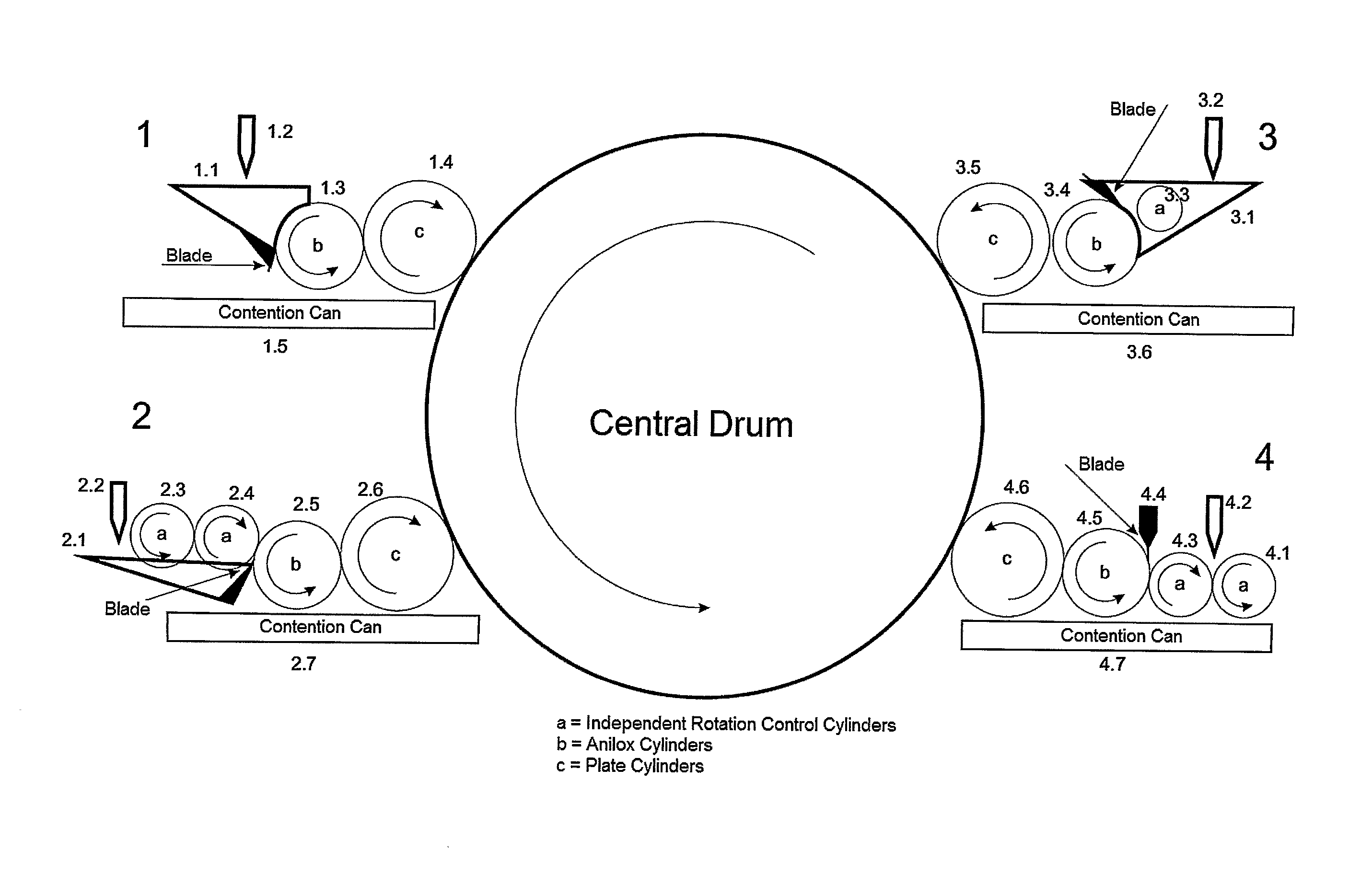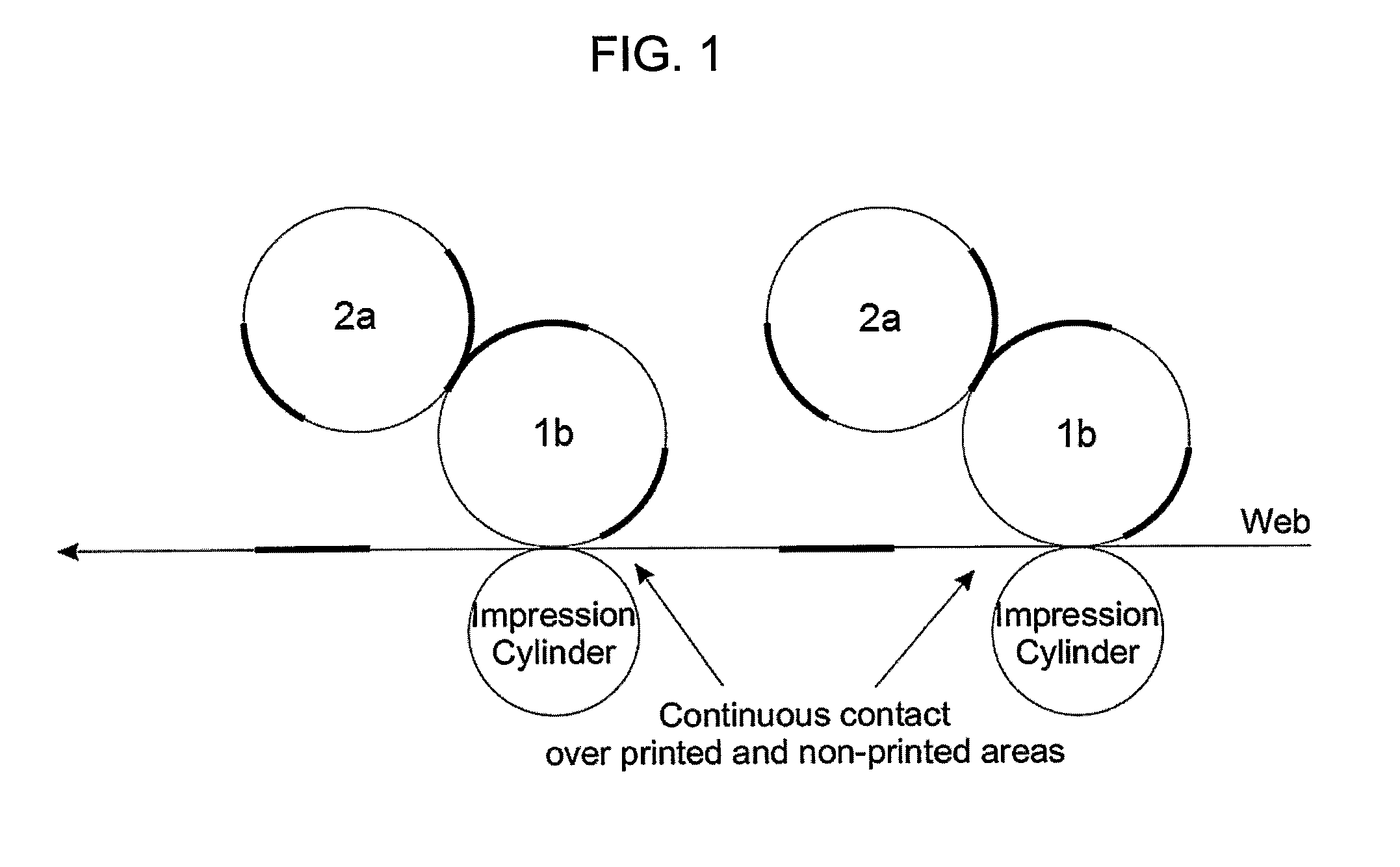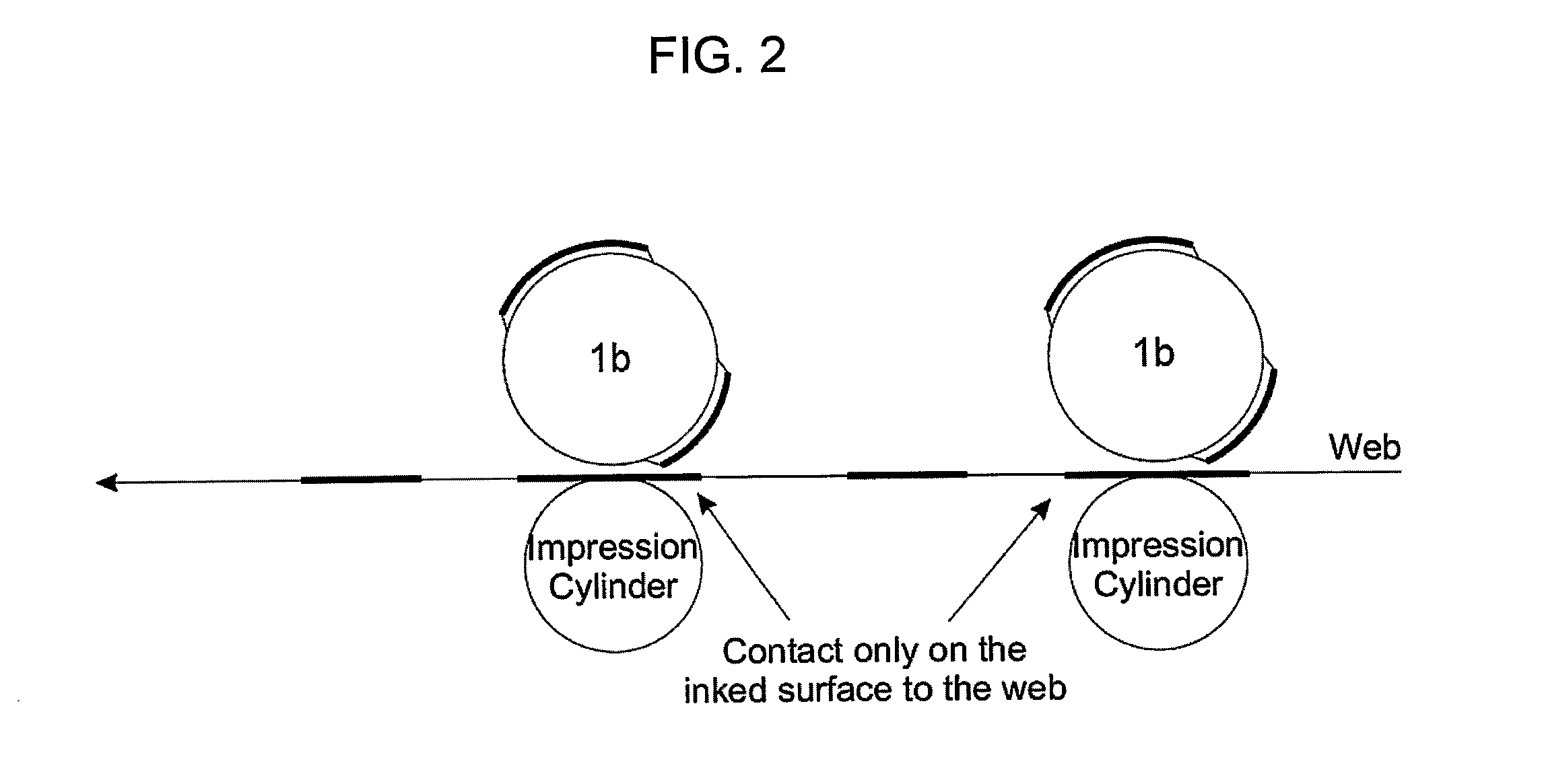Method for pasty ink flexography printing associated to ink load variation due to thermal modulation
a thermal modulation and thermal modulation technology, applied in the field of central drum printing system, can solve the problems of low printing quality, inconvenient liberation, high ink cost, etc., and achieve the effect of high viscosity inks
- Summary
- Abstract
- Description
- Claims
- Application Information
AI Technical Summary
Benefits of technology
Problems solved by technology
Method used
Image
Examples
Embodiment Construction
[0037]The present invention aims creating a flexographic printing system with a central drum equipment which is by means of proper inking systems and with the use of viscous inks is able to produce printings with wet on wet color superimposition with cure at the end of the process by electron acceleration (EB) systems or UV light.
[0038]In addition, the use of high viscosity inks allows controlling the liberation thereof from the (alveolus of the) Anilox cells by means of temperature change which in turn allows a novel ink deposition variation even in the same Anilox cylinder.
[0039]The concept explored herein is quite close to the traditional so-called dry offset or “letterpress”, however using more flexible plates and with the direct printing instead of the indirect printing thereof.
[0040]FIGS. 1 AND 2
[0041]FIG. 1 shows an offset printing system scheme pointing out the fact that in this printing process the ink is transferred to the substrate by means of a rubber covered cylinder kn...
PUM
 Login to View More
Login to View More Abstract
Description
Claims
Application Information
 Login to View More
Login to View More - R&D
- Intellectual Property
- Life Sciences
- Materials
- Tech Scout
- Unparalleled Data Quality
- Higher Quality Content
- 60% Fewer Hallucinations
Browse by: Latest US Patents, China's latest patents, Technical Efficacy Thesaurus, Application Domain, Technology Topic, Popular Technical Reports.
© 2025 PatSnap. All rights reserved.Legal|Privacy policy|Modern Slavery Act Transparency Statement|Sitemap|About US| Contact US: help@patsnap.com



